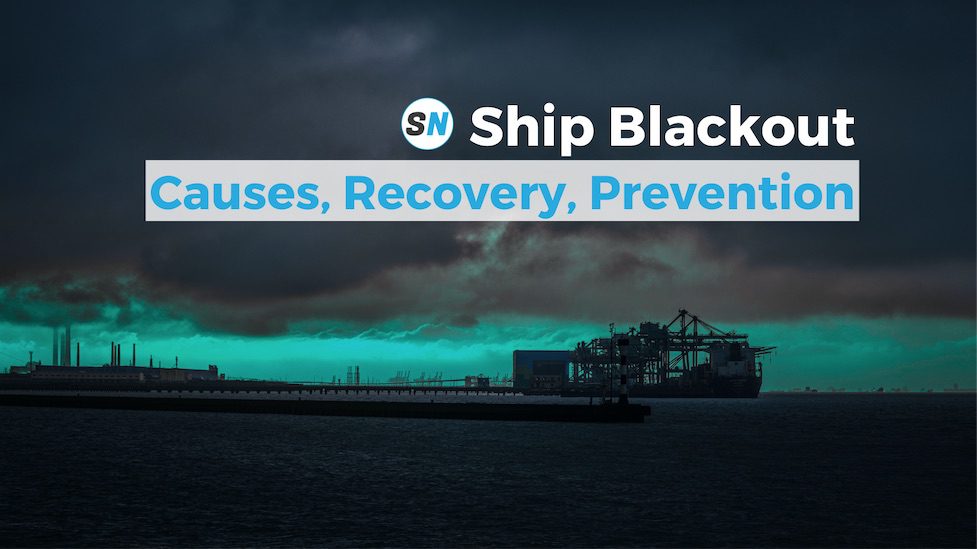28 November 2024
What are the Tests & Trials that a ship undergoes?
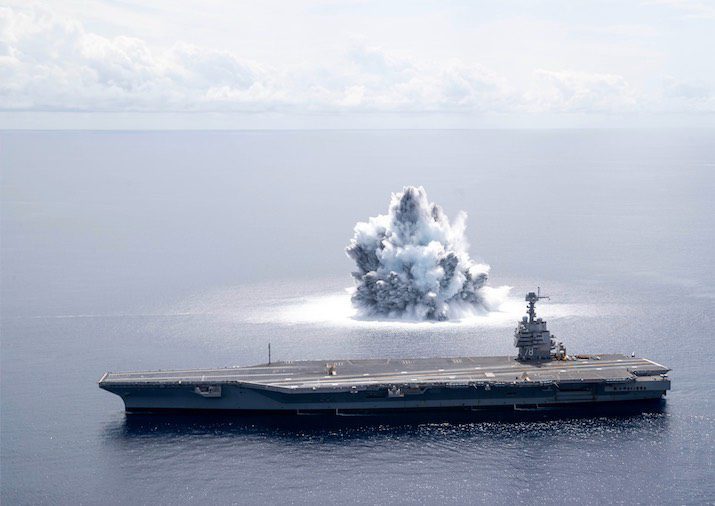
Both a merchant and a naval ship require tests and extensive trials in order to handle the weather conditions and operational challenges. What are these?
Table of Contents
Commercial Vessels
Container ships have been in use for more than half a century. In the 1950s, the containerization of imports and exports increased the necessity for large flat-decked boats that carry these metal storage bins across oceans. Modern containerships are among the largest vessels ever constructed and can carry up to 24,000 containers at once.
Computerized design and ship tests have greatly improved the efficiency of these vessels. In the meantime, reducing the chances of container loss at sea. However, such efforts have not eliminated this costly and time-consuming occurrence. Indeed, crossing the ocean puts container ships at risk of encountering heavy storms that may cause them to lose containers overboard by the dozens or more.
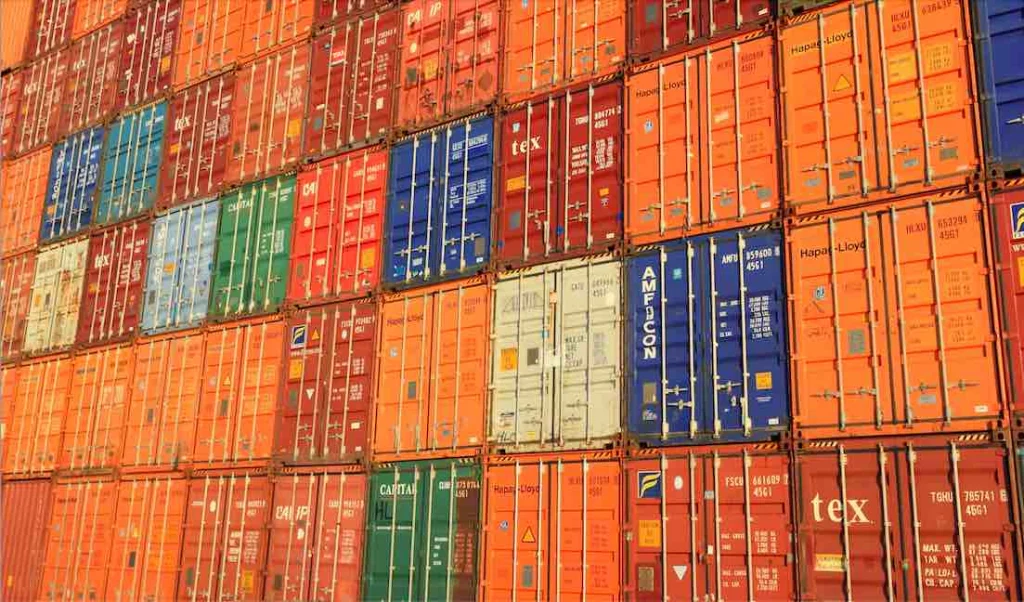
Container transport, loss & salvage
How are containers lost at sea? This is everything you need to know to get up to speed with container loss during transportation and salvage operations to recover the cargo.
Ship Nerd
Model Tests
To prevent future accidents companies like MARIN, the Maritime Research Institute of the Netherlands, have learned to recreate the exact wind and wave conditions that caused previous storm-related accidents. By using ship model tests, in wave-stimulating chambers, they visualize each incident in a controlled environment accurately. Hence, they eventually determined that large-scale container ships, over 180 feet wide are very stable.
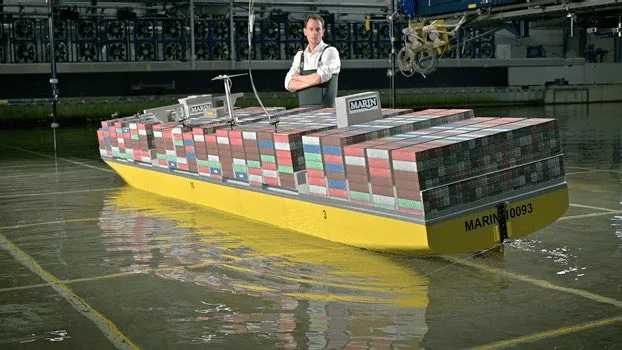
When waves push them from their upright position, they seek to return to equilibrium as fast as possible. This causes a rolling effect which can cause forces to apply to the stacked containers. Therefore, wearing down the metal clamps connecting containers into towers.
In addition, there is the upward-heaving motion of the ship. this can sometimes cause the vessel’s bottom to hit the seabed. Hence, forcing vibrations up through the hull to the deck and into the containers.
The last factor at work in container loss is high waves corroding the metal equipment connecting containers to the deck and the containers to one another. Thanks to the information gleaned from these model simulations, container ship designers can alter the engineering and hydrodynamics of future ships.
Construction
Some of the largest container ships in the world can be as much as 1,200 feet long. Note that, this is more than 100 feet longer than the United States Navy’s General Ford-class aircraft carrier. As a result, making the construction of these ships to be quite an undertaking.
Typically, large vessels like this are assembled inside a dry dock. A mechanical channel connected to a waterway that can be flooded for ships to enter and exit.

Most of the crew quarters and other necessary facilities are located in the tower that houses the bridge. The rest of the hull consists of a series of holds which can be constructed separately and then welded together.
It takes multiple heavy-lifting cranes to move these massive hole sections into place. But once the modular pieces are in full assembly, the ship is essentially complete. This means the dry dock can be flooded and the ship can begin performing its duties after completing its tests.
Capsizing Design
Few situations are more dangerous for a boat and its crew than the threat of capsizing. Beware that, this can happen with almost any type of vessel considering that enough sideways force applies. However, it is far more common in smaller boats or those with flat bottoms.
The lack of a keel makes it easier for the vessel to flip upside down. Thus, putting it completely at the mercy of the wind and waves. Due to this reason, companies like Rafnar Maritime out of Iceland are designing self-writing boats. Hence, turn at 180 degrees in order to remain keel downwards at all times.

These unique designs are based on the simple power of buoyancy. But, they still need rigorous ship tests to prove they can perform as intended. Particularly, a hoisting loop attaches to the side and bottom of the boat and exerts upward pressure. The testers first noticed that the boat is resisting this moment as it wants to remain keel down. Once turned 90 degrees, the boat automatically begins to right itself.
While relatively new, this technology is so impressive that already coast guards and sea rescue organizations are utilizing it worldwide.
Coast Guard Vessels
The United States Coast Guard is widely recognized as one of the best Maritime security and search and rescue organizations in the world. In order to patrol the country’s 95,000 miles of coastline it takes multiple vessels that are each capable of handling specific jobs.
The largest of these vessels are the cutters. These fast-moving vehicles measure more than 65 feet long and are capable of performing a wide range of missions in almost any weather conditions.
When operating in The Frigid North, the USCG often employs even larger ships known as icebreakers. These can measure up to 400 feet long and can move through up to 10 feet of Arctic Ice. Of course, the coast guard also utilizes a wide range of smaller vessels and response boats including a rigid hull inflatable craft, capable of moving through the waves with great speed.
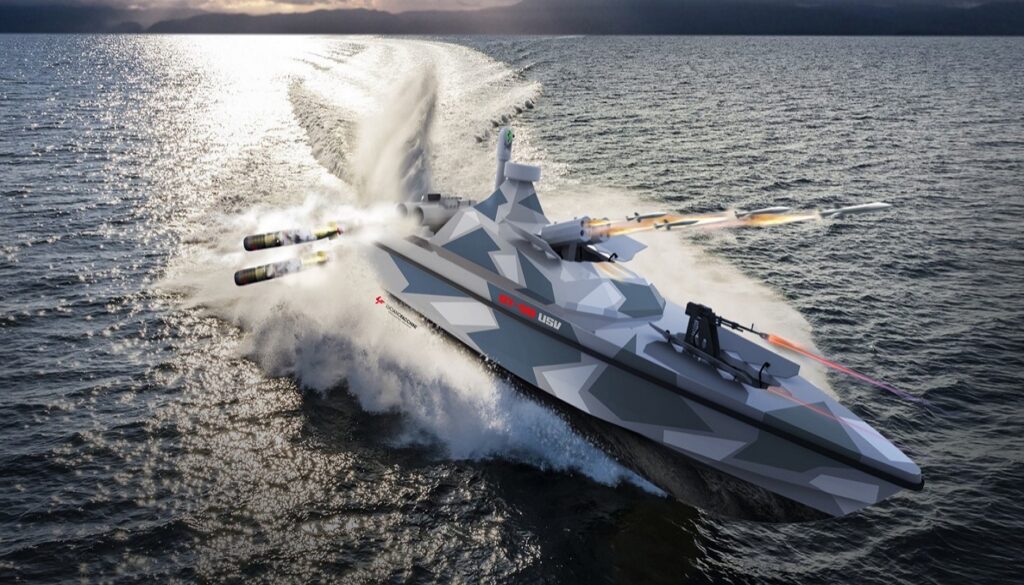
Armed USV (Unmanned Surface Vessel) built in Greece
One more Greek USV – Unmanned Surface Vessel. SuperTermoli develops a heavily-armored USV ST50 for the Hellenic Navy.
Ship Nerd
Rough Weather Tests
To ensure its personnel is as up to the task as the vessels themselves, the coast guard requires its captains to participate in surf training. This is a process by which fully crude ships sail into high waves and breakers. The best approach to such barriers is to plow through them rather than risk capsizing. Considering that coast guard rescue operations typically occur during rough weather, these skills are significantly important.
Ship Shock Trials
As part of the United States Navy, combat vessels have to stand up to a lot more than just waves and bad weather.

For instance, as seen above the USS Gerald R Ford, currently the largest aircraft carrier in the world is participating in full ship shock trials. Specifically, high-powered explosives are set off within the vicinity of the ship to see how well its whole electronics and other systems stand up to the blast. Though the hulls of modern aircraft carriers are armored, explosions like this can do extensive damage in the right circumstances. When it comes to a brand new 13 billion dollar ship like the Gerald R Ford it’s essential to perform ship tests to know exactly how much punishment the vessel can take.
Invasive Maneuvers
Despite being highly resistant to damage and armed with a wide variety of missiles and torpedo countermeasures, modern United States aircraft carriers have other options for evading enemy fire.
The Nimitz-class aircraft carriers are the predecessors to the Gerald R Ford class. They have been practicing invasive maneuver techniques in the middle of the Atlantic Ocean as seen in the figure below.

Despite being nearly 1,100 feet long and weighing over 100,000 tons, these aircraft carriers are surprisingly fast. In fact, their steam turbine engines can push them up to speeds of around 35 miles per hour. Thus, allowing them to outrun an array of smaller ships and in many cases, their weapons. In a real Combat scenario, a Nimitz-class aircraft carrier can move within 700 square miles in just half an hour. In an hour and a half, the range can expand to a 6,000-square-mile area. As a result, it reduces the carrier’s chance of having its position pinpointed by its enemies.
Defensive Measures
Smaller ships like destroyers and cruisers utilize a wide range of maneuvers both offensive and defensive. These include drifting defensive patterns and zigzagging. Unfortunately, these are rarely enough to escape a Potential Threat, especially with the many advances in missile technology over the past few decades. For this reason, these maneuvers are almost, always combined with high-tech jamming and decoy tactics.
Specifically, the former attempts to disorient the systems of the enemy ship or incoming missile so that it misses its Target. The latter creates a radar signature, known as a decoy Cloud, which can convince an incoming missile or torpedo. But the ship is actually located elsewhere.
Last but not least, there are certain missiles like the Sea Sparrow that are fast and accurate enough to intercept enemy missiles before they reach their targets.
Whether Waging War against enemy Nations or merely against Mother Nature, there is no denying the ocean is a dangerous place. With new engineering, better maneuvers, and high-tech countermeasures, there are more options than ever to keep vessels and their Crews safe.
See Also

The reason why underwater cables are so expensive
Why underwater cables are so expensive? Get up to speed on underwater cables construction, application, recycle while also advanced cable laying vessels.


